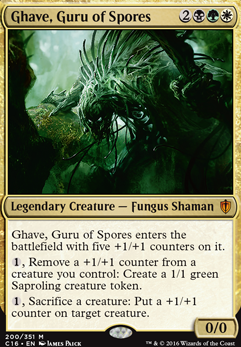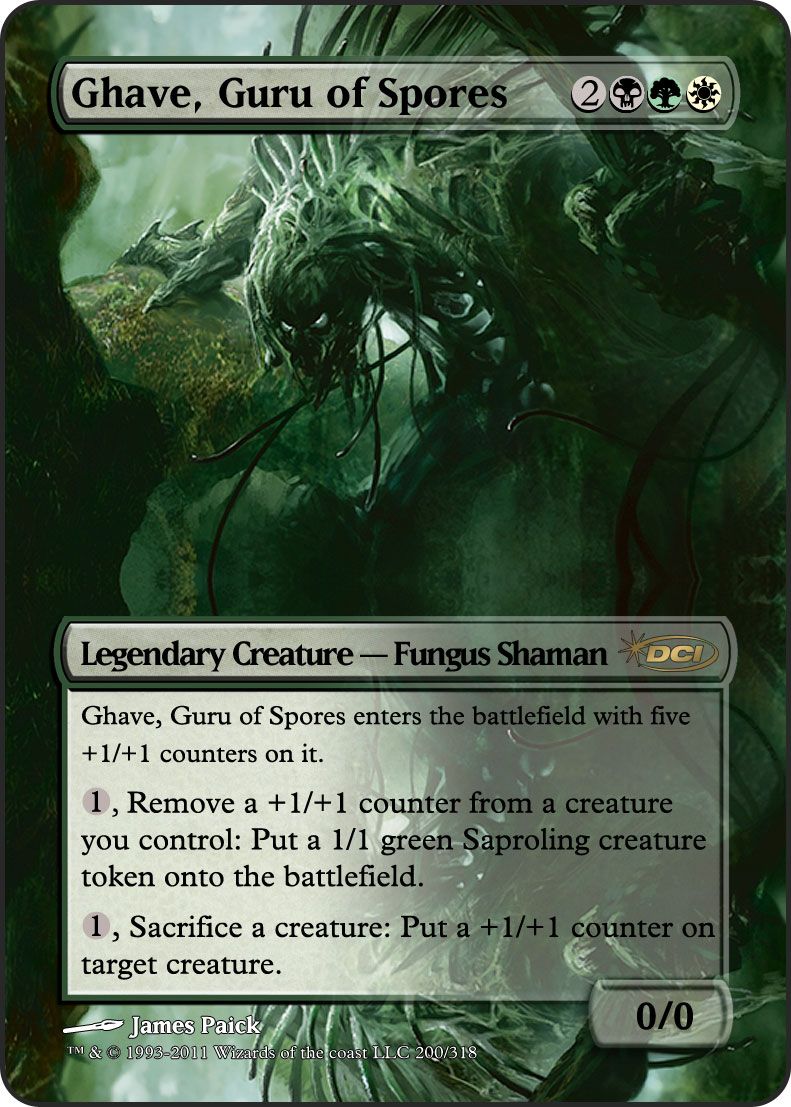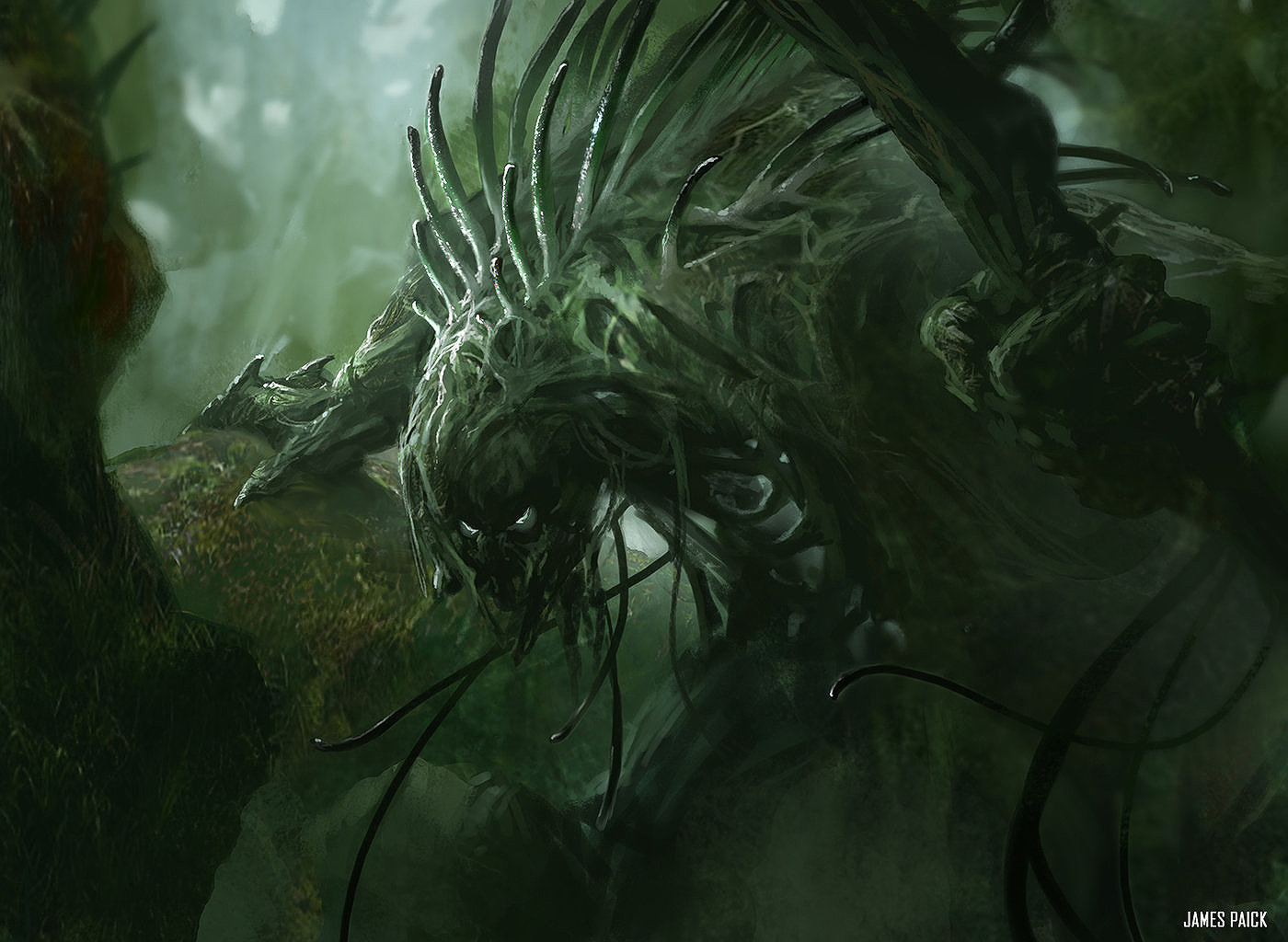The deck could be played just fine without most of these tutors, just not as efficiently. All of these are great for getting the missing piece you need in the moment.
Academy Rector

An all-star. Brings an enchantment right out to the battlefield, and the Rector herself can be tutored for with a creature tutor. The quickest way to win is fetching
Pattern of Rebirth with a sac outlet available, but it's still good for getting that
Earthcraft or
Doubling Season.
Note: While Birthing Pod was cut from the deck, I'm leaving the list here for reference at a quick glance. I will no longer be updating it for any changes to the creature package, however.
Birthing Pod

This one is the more specifically variable tutors at our disposal, and it all depends on what you have available to feed it. If we're lucky and have the right cmc creature to get the piece we need, then great. Otherwise we have to let our tutoring evolve naturally as the card intends. Either way it makes a good sac outlet when you need one for say
Protean Hulk. For reference I'll list the tutoring possibilities below.
1 drop
2 drop
3 drop
4 drop
5 drop
6 drop
7 drop
- Woodfall Primus
- Woodfall is redundantly out of reach for Birthing Pod since as soon as you sacrifice Protean Hulk you basically win. But who knows? Maybe you'd rather bring out the expensive persist creature for some reason. I won't tell you how to live your life.
Chord of Calling

I love tutoring a creature straight to the battlefield. It bypasses that nonsense where you have to hard cast it from your hand. The convoke is also good if we've already played some cheap creatures or have some tokens out from Ghave.
Demonic Tutor

Add any card I want to my hand for 2 mana ? I see why Liliana keeps making deals with demons.
Diabolic Intent

A poor man's
Demonic Tutor all for the extra cost of sacrificing a creature. Darn. Can't have us sacrificing things, now can we?
Eldritch Evolution

Basically a higher reaching
Birthing Pod without the specific cmc restriction. This card is great for trading a combo piece that doesn't work with what we have for one that does. Also it can sac
Ghave and bring out
The Hulk.
Enlightened Tutor

I like the flexibility of this tutor to get an enchantment or an artifact (read:
Ashnod's Altar or
Phyrexian Altar) for
. It's best used at the end step of our opponent right before it's our turn to draw.
Fiend Artisan

A more flexible
Birthing Pod as long as you have the mana.
Finale of Devastation

This card is amazing. Grab any creature from our library OR our graveyard! It's
Green Sun's Zenith but better! It's last ability could also be relevant in grindy situations as well.
Natural Order

This one is fantastic. Ditch an unwanted green creature (or better yet a Saproling token) for whatever green creature you want. Did I mention I liked tutoring creatures straight to the battlefield?
Pattern of Rebirth

This card is essentially a win con as it really only ever has one use. We use it to fetch
Protean Hulk. Granted
Natural Order can do the same thing, and Pattern is still a reliable tutor to get whatever creature we might need in the moment.
Protean Hulk

A tutor that functions as a tutorable combo piece. If we can get him out and kill him, we can set up an infinite recursion/tutor combo.
Survival of the Fittest

Excellent for cycling a creature for a better one. Especially good when discarding one of our recursion combo pieces for another one.
Vampiric Tutor

Any card we want for one mana. It's
Enlightened Tutor but better.
Alternate Options
Eladamri's Call
 Worldly Tutor
Worldly Tutor

These are both good creature tutors,
Worldly Tutor basically being an
Enlightened Tutor for creatures, but I prefer the ones that put them right out onto the battlefield if possible. Still these are nothing to sneeze at and make great additions if you prefer them.
Green Sun's Zenith

I've been considering this one for some time as well. It's cheaper than
Chord of Calling even if it doesn't have Convoke, and it only grabs green creatures. That's usually not a bad restriction for us, but sometimes we want some flexibility. However it also doubles as turn 1 ramp with
Dryad Arbor. I haven't decided on a good cut for it, but it's an excellent include.
Tooth and Nail

I cut this one for
Natural Order when I removed
Triskelion from the deck. It's great to get out two combo pieces at once, especially when they win you the game. My only gripe is how expensive it costs. If we're playing a fast, competitive game, we'll want to have won by the time we have the mana to cast it. If you're not worried about the competitiveness, it's a great bomb.
Diabolic Tutor

Too much mana just for one card to our hand.
Vampiric Tutor outclasses it. It's a good budget tutor if you're not too worried about speed, though.
Grim Tutor

With the reprint of this card in Core Set 21, it might drop in price into an affordable range. It's better than
Diabolic Tutor but not as good as
Demonic Tutor. Run it only if you've already got all the tutors better than it but feel like you still want one more that can grab any card.
Congregation at Dawn

As this one only puts creatures on top of the deck, it's a little lackluster. However it does have good synergy with
Necropotence and
Sylvan Library. It's also dirt cheap in price, so it works as a budget tutor.
Jarad's Orders

This is an interesting one. I've included it in the budget version of the deck. At the very least it gets a creature to our hands (and in that regard
Diabolic Tutor is strictly better) but it can accelerate the recursion combo by putting one piece in your hand and the other in the grave.
Idyllic Tutor

Tutoring for enchantments. Was cut for
Finale of Devastation
Fauna Shaman

A budget
Survival of the Fittest but a bit slower since it gets summoning sickness and can only activate once per turn.
Scheming Symmetry

A decent budget tutor if you can draw your card before your opponent.
Yisan, the Wanderer Bard

Tutors on a curve but an option if you're on a budget. We don't run the shell he needs to be a powerhouse.





















 Stats:
Stats:
 Stats:
Stats:
 Stats:
Stats:
 Stats:
Stats:
 Stats:
Stats:
 Stats:
Stats:
 Counter source that also has some synergy when no going infinite. Was cut for
Counter source that also has some synergy when no going infinite. Was cut for  Counter source that combos with Ghave and green persist creatures. Was cut for
Counter source that combos with Ghave and green persist creatures. Was cut for  Counter source that goes infinite with Ghave. Does not combo with as many other cards in the deck as other counter sources and was cut for
Counter source that goes infinite with Ghave. Does not combo with as many other cards in the deck as other counter sources and was cut for  Counter source that combos with Ghave and persist creatures. Was cut for
Counter source that combos with Ghave and persist creatures. Was cut for  Counter source that was in the deck once upon a time but was cut for other pieces of the deck because it only combo'd with saprolings and not persist creatures.
Counter source that was in the deck once upon a time but was cut for other pieces of the deck because it only combo'd with saprolings and not persist creatures.
 Stats:
Stats:
 Stats:
Stats:
 Stats:
Stats:
 Stats:
Stats:
 Stats:
Stats:
 Stats:
Stats:
 Stats:
Stats:
 Stats:
Stats:

 Stats:
Stats:
 Stats:
Stats:
 Stats:
Stats:


 Cheap persist creature options. They fit any persist combos, but other than that they're vanilla. Still they're options if your goal is to combo with perist as soon as you can. I guess
Cheap persist creature options. They fit any persist combos, but other than that they're vanilla. Still they're options if your goal is to combo with perist as soon as you can. I guess  Another persist option that combos well with
Another persist option that combos well with  Stats:
Stats:
 Stats:
Stats:
 Stats:
Stats:









 Mills all opponents with infinite ETB triggers. Was cut for
Mills all opponents with infinite ETB triggers. Was cut for  A wincon piece that drains the board with infinite death triggers. Was cut for
A wincon piece that drains the board with infinite death triggers. Was cut for  Destroys all creatures with infinite tokens. Gets around indestructible. Was cut for
Destroys all creatures with infinite tokens. Gets around indestructible. Was cut for 
 Dictate and Martyr's are more budget-friendly options for
Dictate and Martyr's are more budget-friendly options for  Turns infinite death triggers into infinite mana.
Turns infinite death triggers into infinite mana.
 Another
Another  A
A  An outlet to draw the deck with infinite mana and tokens. Another option alongside
An outlet to draw the deck with infinite mana and tokens. Another option alongside  A free sac outlet that mills the table with an infinite sac loop.
A free sac outlet that mills the table with an infinite sac loop.
 While not quite as useful as the altars for comboing with the commander, it's a win con if we already have infinite tokens running or by constantly recurring the creature we sacrifice to it.
While not quite as useful as the altars for comboing with the commander, it's a win con if we already have infinite tokens running or by constantly recurring the creature we sacrifice to it.
 A one-drop that's a creature. Easy on the mana and tutorable with our many creature tutors. It can also become huge which is nice.
A one-drop that's a creature. Easy on the mana and tutorable with our many creature tutors. It can also become huge which is nice.
 It has the same benefits as
It has the same benefits as  While not technically a free sac outlet, the 1 life cost is negligible and worth it for the utility that Yawg brings. With any kind of lifegain, he can go infinite.
While not technically a free sac outlet, the 1 life cost is negligible and worth it for the utility that Yawg brings. With any kind of lifegain, he can go infinite.
 An all-star. Brings an enchantment right out to the battlefield, and the Rector herself can be tutored for with a creature tutor. The quickest way to win is fetching
An all-star. Brings an enchantment right out to the battlefield, and the Rector herself can be tutored for with a creature tutor. The quickest way to win is fetching  This one is the more specifically variable tutors at our disposal, and it all depends on what you have available to feed it. If we're lucky and have the right cmc creature to get the piece we need, then great. Otherwise we have to let our tutoring evolve naturally as the card intends. Either way it makes a good sac outlet when you need one for say
This one is the more specifically variable tutors at our disposal, and it all depends on what you have available to feed it. If we're lucky and have the right cmc creature to get the piece we need, then great. Otherwise we have to let our tutoring evolve naturally as the card intends. Either way it makes a good sac outlet when you need one for say  I love tutoring a creature straight to the battlefield. It bypasses that nonsense where you have to hard cast it from your hand. The convoke is also good if we've already played some cheap creatures or have some tokens out from Ghave.
I love tutoring a creature straight to the battlefield. It bypasses that nonsense where you have to hard cast it from your hand. The convoke is also good if we've already played some cheap creatures or have some tokens out from Ghave.
 Add any card I want to my hand for 2 mana ? I see why Liliana keeps making deals with demons.
Add any card I want to my hand for 2 mana ? I see why Liliana keeps making deals with demons.
 A poor man's
A poor man's  Basically a higher reaching
Basically a higher reaching  I like the flexibility of this tutor to get an enchantment or an artifact (read:
I like the flexibility of this tutor to get an enchantment or an artifact (read:  A more flexible
A more flexible  This card is amazing. Grab any creature from our library OR our graveyard! It's
This card is amazing. Grab any creature from our library OR our graveyard! It's  This one is fantastic. Ditch an unwanted green creature (or better yet a Saproling token) for whatever green creature you want. Did I mention I liked tutoring creatures straight to the battlefield?
This one is fantastic. Ditch an unwanted green creature (or better yet a Saproling token) for whatever green creature you want. Did I mention I liked tutoring creatures straight to the battlefield?
 This card is essentially a win con as it really only ever has one use. We use it to fetch
This card is essentially a win con as it really only ever has one use. We use it to fetch  A tutor that functions as a tutorable combo piece. If we can get him out and kill him, we can set up an infinite recursion/tutor combo.
A tutor that functions as a tutorable combo piece. If we can get him out and kill him, we can set up an infinite recursion/tutor combo.
 Excellent for cycling a creature for a better one. Especially good when discarding one of our recursion combo pieces for another one.
Excellent for cycling a creature for a better one. Especially good when discarding one of our recursion combo pieces for another one.
 Any card we want for one mana. It's
Any card we want for one mana. It's 
 These are both good creature tutors,
These are both good creature tutors,  I've been considering this one for some time as well. It's cheaper than
I've been considering this one for some time as well. It's cheaper than  I cut this one for
I cut this one for  Too much mana just for one card to our hand.
Too much mana just for one card to our hand.  With the reprint of this card in Core Set 21, it might drop in price into an affordable range. It's better than
With the reprint of this card in Core Set 21, it might drop in price into an affordable range. It's better than  As this one only puts creatures on top of the deck, it's a little lackluster. However it does have good synergy with
As this one only puts creatures on top of the deck, it's a little lackluster. However it does have good synergy with  This is an interesting one. I've included it in the budget version of the deck. At the very least it gets a creature to our hands (and in that regard
This is an interesting one. I've included it in the budget version of the deck. At the very least it gets a creature to our hands (and in that regard  Tutoring for enchantments. Was cut for
Tutoring for enchantments. Was cut for  A budget
A budget  A decent budget tutor if you can draw your card before your opponent.
A decent budget tutor if you can draw your card before your opponent.
 Tutors on a curve but an option if you're on a budget. We don't run the shell he needs to be a powerhouse.
Tutors on a curve but an option if you're on a budget. We don't run the shell he needs to be a powerhouse.
 The best mana rock that's not named
The best mana rock that's not named  Mana dork for . Always good to get our other colors out.
Mana dork for . Always good to get our other colors out.
 Does this one really need an explanation?
Does this one really need an explanation?
 Big mana is good. Always taps for with Ghave out.
Big mana is good. Always taps for with Ghave out.
 Mana dork for . Except this one pings us because its meaner than
Mana dork for . Except this one pings us because its meaner than  Brings a forest into play untapped, so it is faster than most ramp spells. Can grab forest shocks for color fixing or a basic for
Brings a forest into play untapped, so it is faster than most ramp spells. Can grab forest shocks for color fixing or a basic for  Not only is this one basically a
Not only is this one basically a  Duh
Duh
 Early ramp that has synergy with
Early ramp that has synergy with  More early ramp that has synergy with
More early ramp that has synergy with  Grab a basic for 2 mana. Solid ramp and feeds
Grab a basic for 2 mana. Solid ramp and feeds  Sure, there are faster ways to ramp, but it still acts as a mana rock which does ramp us a bit. Besides it makes all our lands a
Sure, there are faster ways to ramp, but it still acts as a mana rock which does ramp us a bit. Besides it makes all our lands a  It's a combo piece in some circumstances (see
It's a combo piece in some circumstances (see 
 Ramp that goes infinite with
Ramp that goes infinite with  Budget
Budget  Exile a thing. Worth the 3 life.
Exile a thing. Worth the 3 life.
 Ravnica's new toy. It can even destroy lands! Auto include.
Ravnica's new toy. It can even destroy lands! Auto include.
 Destroys any permanent which is super versatile. Costs one more than
Destroys any permanent which is super versatile. Costs one more than  Better than
Better than  4 mana might seem a bit steep for single target removal, but it gives us the option of an artifact or enchantment. Not to mention we can get rid of two things on our turn. Was cut for
4 mana might seem a bit steep for single target removal, but it gives us the option of an artifact or enchantment. Not to mention we can get rid of two things on our turn. Was cut for  Some of the most abusable card draw in all of magic. It might as well say "fill up your hand at the end of each turn" because that's exactly how I use it.
Some of the most abusable card draw in all of magic. It might as well say "fill up your hand at the end of each turn" because that's exactly how I use it.
 It's like scrying and extra draw all in one! We can either take the life to fill our hands or at the very least use it to fix our draws.
It's like scrying and extra draw all in one! We can either take the life to fill our hands or at the very least use it to fix our draws.
 Draw a card each time we sacrifice a creature. Excellenct draw, but it also allows opponents to draw. Would not recommend next to
Draw a card each time we sacrifice a creature. Excellenct draw, but it also allows opponents to draw. Would not recommend next to 





